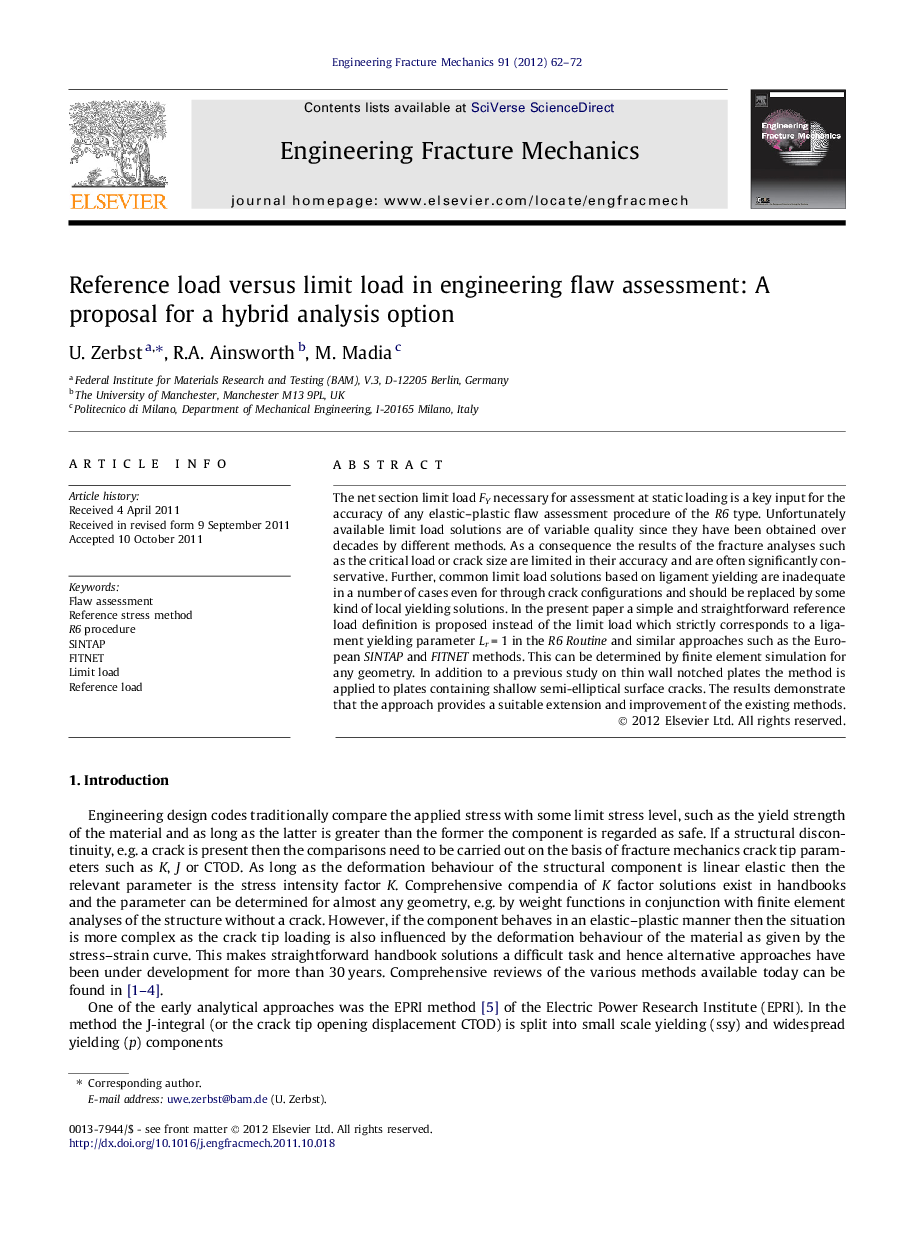| Article ID | Journal | Published Year | Pages | File Type |
|---|---|---|---|---|
| 775278 | Engineering Fracture Mechanics | 2012 | 11 Pages |
The net section limit load FY necessary for assessment at static loading is a key input for the accuracy of any elastic–plastic flaw assessment procedure of the R6 type. Unfortunately available limit load solutions are of variable quality since they have been obtained over decades by different methods. As a consequence the results of the fracture analyses such as the critical load or crack size are limited in their accuracy and are often significantly conservative. Further, common limit load solutions based on ligament yielding are inadequate in a number of cases even for through crack configurations and should be replaced by some kind of local yielding solutions. In the present paper a simple and straightforward reference load definition is proposed instead of the limit load which strictly corresponds to a ligament yielding parameter Lr = 1 in the R6 Routine and similar approaches such as the European SINTAP and FITNET methods. This can be determined by finite element simulation for any geometry. In addition to a previous study on thin wall notched plates the method is applied to plates containing shallow semi-elliptical surface cracks. The results demonstrate that the approach provides a suitable extension and improvement of the existing methods.
